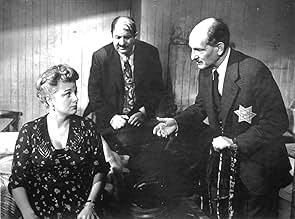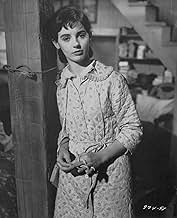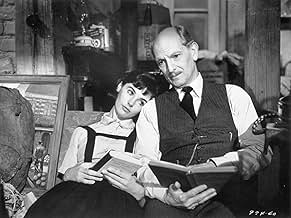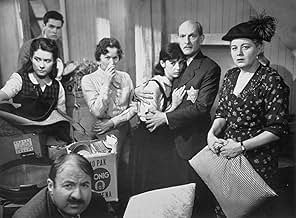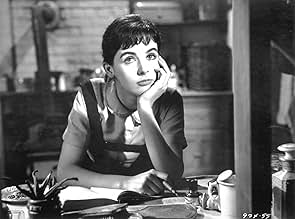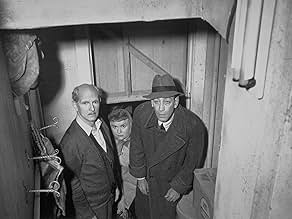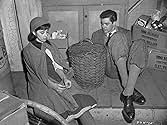Amsterdam, julio de 1942. Con objeto de escapar de la Gestapo, la familia Frank se esconde en la buhardilla del señor Krater. Allí convivirán con otro grupo de judíos: la familia Van Daan. T... Leer todoAmsterdam, julio de 1942. Con objeto de escapar de la Gestapo, la familia Frank se esconde en la buhardilla del señor Krater. Allí convivirán con otro grupo de judíos: la familia Van Daan. Todo quedará reflejado en el diario de una pequeña joven: Anne.Amsterdam, julio de 1942. Con objeto de escapar de la Gestapo, la familia Frank se esconde en la buhardilla del señor Krater. Allí convivirán con otro grupo de judíos: la familia Van Daan. Todo quedará reflejado en el diario de una pequeña joven: Anne.
- Dirección
- Guionistas
- Elenco
- Ganó 3 premios Óscar
- 9 premios ganados y 14 nominaciones en total
- Miep Gies
- (as Dody Heath)
- Dutch Workman
- (sin créditos)
- SS Man
- (sin créditos)
- Dutch Workman
- (sin créditos)
- SS Man
- (sin créditos)
- Sanne Devries
- (sin créditos)
- Workman in Shop
- (sin créditos)
- British Radio Announcer
- (voz)
- (sin créditos)
Opiniones destacadas
Three members of the original Broadway cast did their roles for the screen, Joseph Schildkraut, Lou Jacobi, and Gusti Huber. Joseph Schildkraut as Otto Frank is the backbone of the film, providing the moral authority in the cast. He's a teacher and a scholar and makes sure that even under these circumstances, the education of his daughters is not neglected. Gusti Huber is Mrs. Frank and Lou Jacobi is Mr. Van Daan.
The Van Daans and the Franks have been offered shelter in a third floor apartment that is kept secret by a hidden door in a factory owner. The owner Mr. Kraler played by Douglas Spencer is an anti-Nazi and has offered to keep these two Jewish families hidden for the duration of the war in Holland. For two years they live in that apartment and aside from radio news all they know of the outside world is that street in Amsterdam where the factory is located. Director George Stevens to keep the viewer from getting claustrophobic provides us with occasional shots of the outside street and canal. This film is the ultimate in cabin fever.
But it has to be so for the Van Daans and the Franks are hiding for their lives. It's a community of necessity that's created up in the third floor.
Young Millie Perkins does fine in the title role originated on Broadway by Susan Strassberg. She has an Audrey Hepburn like appeal, but never had the career Audrey certainly did. Her sister Margit is played by Diane Baker who's career was a bit more substantial. Two very normal average teenage girls, except that Anne has a talent for writing and observing.
The frightening thing about this film is the very ordinariness of the characters. What have these people ever done that the might of the Nazi war machine should be out looking for them? Some of them are certainly not noble specimens as the movie shows, but their lives are so humdrum like millions of us. Simply because for politics sake, someone was scapegoating a religion.
Ed Wynn as Drussel the dentist and Shelley Winters as Mrs. Van Daan were nominated for supporting players in the male and female categories that year. Wynn lost, but Winters won the first of her two Oscars for this film. Up to then Ms. Winters played some pretty brassy characters in film. She fought for and won this role and got acclaim worldwide for her portrayal as a wife and mother. It was a transition into those kind of roles for her.
So Anne observed and wrote about her impressions of what she saw and heard and the people around her for two years. In a sense this is like Moby Dick with the Pequod being the apartment and the white whale being the Nazis. Joseph Schildkraut is no Ahab, he's just trying to lead his community for survival.
When the Nazis come, Anne's diary is hidden and after the war one of the community comes back and like Ishmael retrieves the diary and very much tells the tale.
Anne's diary, the hopes and dreams of a teenage girl caught up in a world of hate she couldn't comprehend, is now classic literature. It serves as a dark reminder of the bestial nature we can sink to. And it reminds us that hope, courage and love can spring from the darkest places.
The story is based on a stageplay which was in turn based on the actual diary of Anne Frank, whose family (being Jewish) went into hiding in Nazi-occupied Holland in 1942, sharing a very small space with several others. As the title implies, the movie is largely about Anne. We watch her grow up in this claustrophobic setting - starting at age 13 and spending more than two years there until the group was discovered. Starting out as a child with a natural rebellious streak, Anne grows into a young woman, falling in love with a young man sharing the living quarters. Millie Perkins was excellent as young Anne, and I was impressed with Joseph Schildkraut as her father Otto, who was in the end the only survivor. The movie begins and ends with his post-war visit to the place where they were hidden, and his grief at being the only survivor among his family is powerfully portrayed. In general, all the performances in this were quite good, and there was a believable portrayal of the difficulties involved in so many people sharing so little space under such stressful circumstances, and there are a number of very suspenseful moments involved. It's a very moving story.
Surprisingly, there is real tension especially during the robberies. The quiet brings a heighten intensity. The cast's acting is generally great. There is a poignancy with this first film production of the material. The only drawback is Millie Perkins. Her inexperienced acting actually works for her in this case although as a twenty year old, playing Anne at 13 is a little off. She doesn't have the youth to play the character's brattiness. It's a minor problem in an otherwise terrific production.
¿Sabías que…?
- TriviaAudrey Hepburn was first offered the role of Anne Frank, and Otto Frank was among those who nominated her. She refused it for three reasons. Firstly, she had decided to accept the role in Green Mansions (1959). Secondly, she had lived in occupied The Netherlands during the war and had seen the Nazis carry out street executions and watched as they herded Jews onto boxcars to carry them to concentration camps. She knew that making the film would bring back memories that were far too painful for her. However, thirdly, she was 30 and felt that she was too old to play a teenage character convincingly on screen.
- ErroresAnne Frank was given the diary for her thirteenth birthday, a few days before they all went into hiding and not after going into hiding as depicted in the film.
- Citas
Anne Frank: I know it's terrible trying to have any faith when people are doing such horrible... But you know what I sometimes think? I think the world may be going through a phase, the way I was with mother. It'll pass. Maybe not hundreds of years, but someday. - I still believe, in spite of everything, that people are really good at heart.
- Créditos curiososAt the end, neither a "The End" credit nor a cast list appears, only the title of the film once more ("The Diary of Anne Frank").
- Versiones alternativasOriginally released at 170 minutes, then later cut and available only in 156-minutes version. Complete edition has been recently restored on video.
- ConexionesFeatured in George Stevens: A Filmmaker's Journey (1984)
- Bandas sonorasBerg op zoom
(uncredited)
Traditional
Selecciones populares
- How long is The Diary of Anne Frank?Con tecnología de Alexa
- Is 'The Diary of Anne Frank' based on a book?
- How old was Anne Frank when the family first went into hiding?
- How many people go into hiding with the Franks?
Detalles
Taquilla
- Presupuesto
- USD 3,800,000 (estimado)
- Tiempo de ejecución3 horas
- Color
- Relación de aspecto
- 2.35 : 1
Contribuir a esta página



